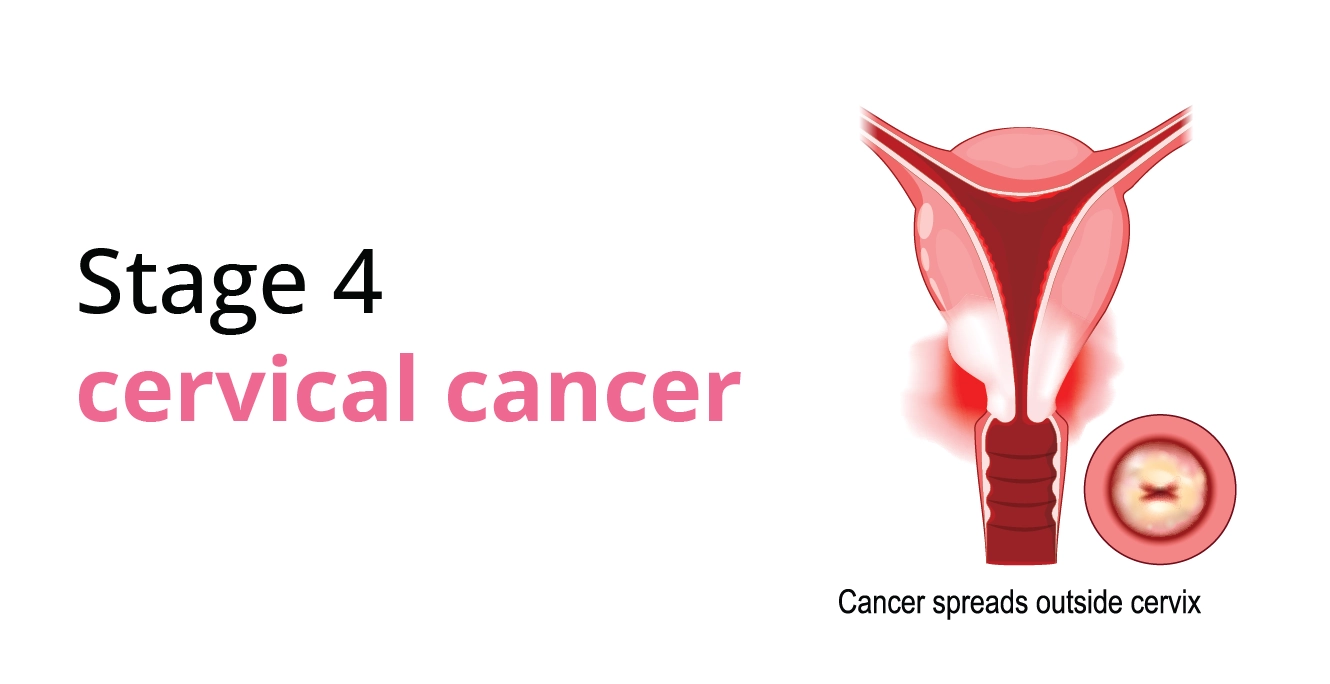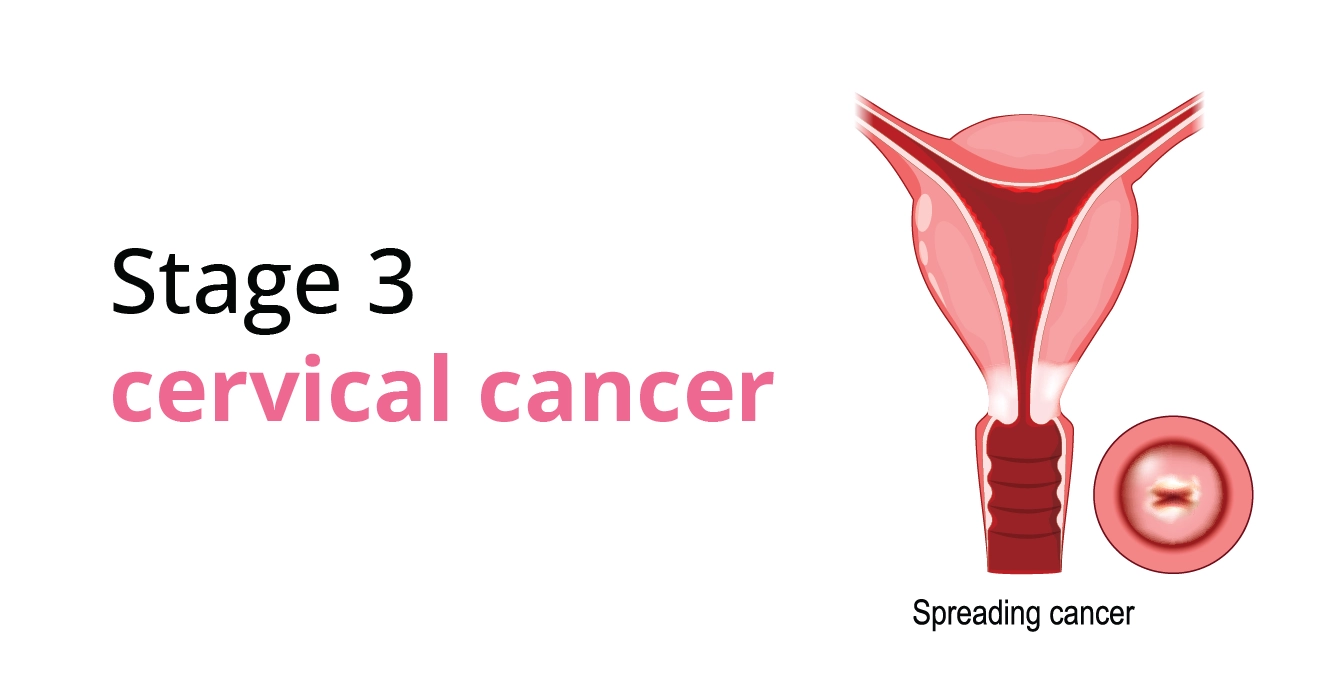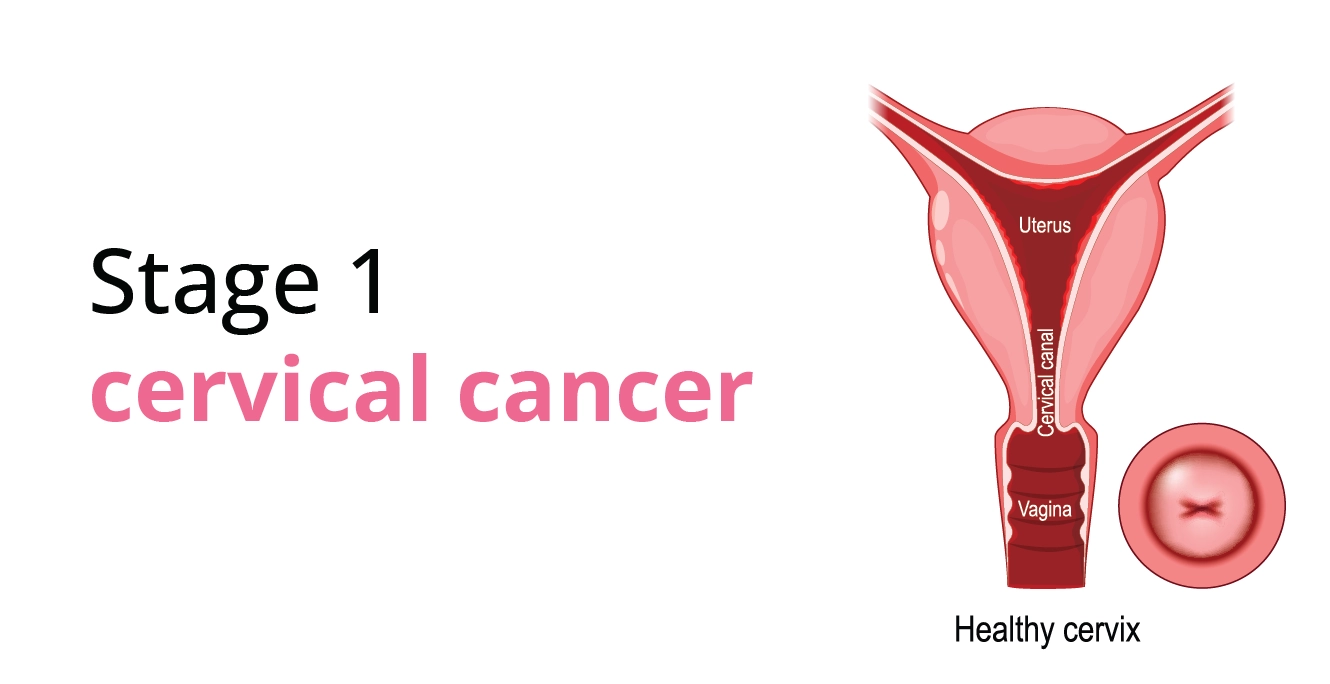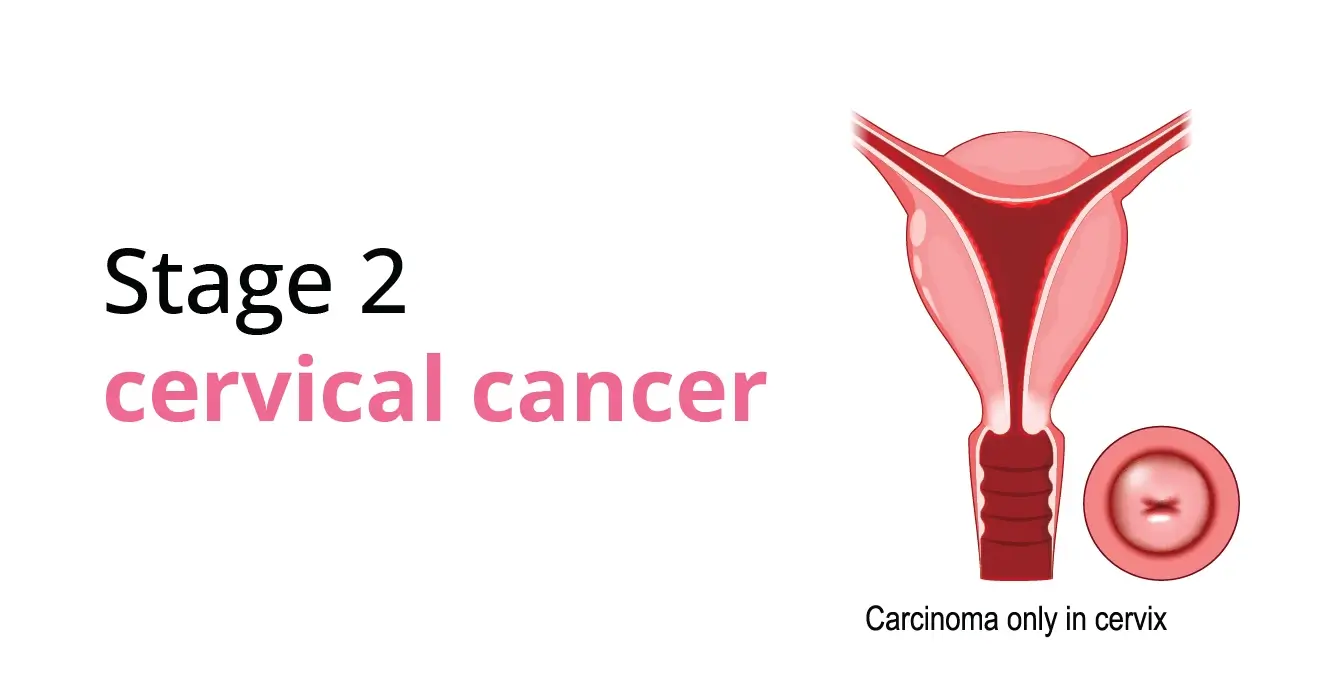
Stage 4 Cervical Cancer: Symptoms, Diagnosis, and Treatment

Table of Contents
- What is Stage 4 Cervical Cancer?
- What Are the Symptoms of Stage 4 Cervical Cancer?
- Diagnosis of Stage 4 Cervical Cancer
- Risk Factors for Cervical Cancer
- What Are the Treatment Options for Stage 4 Cervical Cancer?
- Is it Possible to Cure Stage 4 Cervical Cancer?
- How Long Does It Take to Develop Stage 4 Cervical Cancer?
- Survival Rate of Stage 4 Cervical Cancer
- Additional Tips for Managing Stage 4 Cervical Cancer
- How Do Stage 4 Cervical Cancer Treatments Affect Fertility?
- Word From An Expert
We know that the fourth stage of cancer is a serious condition but this is not the end of hope—advancements in treatment and care can still make a difference.
The first stage of cervical cancer does not always have easily signs and symptoms, so getting screened for cervical cancer, such as Pap smears, is crucial. Cervical cancer is considered advanced if it reaches the fourth stage as it has the potential to impact the body significantly. Read this blog to learn about stage 4 cervical cancer’s signs, treatment, prognosis and other critical aspects.
What is Stage 4 Cervical Cancer?
The last stage of cervical cancer is known as stage 4 cervical cancer. Cervical cancer at this stage has spread outside the cervix to other parts of the body, such as distant organs. It is further divided into two categories:
Stage 4A:
In stage 4A, the cancer has extended to the bladder, rectum or other areas of the pelvic region. There is a possible spread to nearby lymph nodes also but it has not invaded distant organs such as the lungs or liver.
Stage 4B:
The cancer has now spread to distant organs beyond the pelvic area including the lungs, liver or bones. The treatment of this stage is normally a challenge because the cancer has spread beyond the primary site.
What Are the Symptoms of Stage 4 Cervical Cancer?
Symptoms may become more prominent as the cervical cancer advances to stage 4. Following are the common signs.
- Pelvic pain or pressure: Pain in the pelvic area which may worsen over time.
- Painful urination or blood in urine: This could indicate the cancer has spread to the bladder.
- Abnormal vaginal bleeding: The symptoms may include bleeding between periods, after intercourse or after menopause.
- Bowel issues: Difficulty with bowel movements or blood in stools could indicate the cancer has affected the rectum.
- Fatigue and weight loss: Unexplained fatigue and significant weight loss can occur as the body fights the disease.
- Leg swelling: This might occur if the cancer has spread to the lymph nodes or if there is blockage in the lymphatic system.
It is important to note that these symptoms may also be due to some other underlying issue, so one must not self-prescribe themselves. If you suspect you have the symptoms, consult a healthcare provider for testing and diagnosis.
Diagnosis of Stage 4 Cervical Cancer
The diagnosis in the case of stage 4 cervical cancer usually includes a combination of the below tests.
| Diagnosis | Why is it Done? |
| Physical /Pelvic examination | It is done to check any abnormalities in the cervix and surrounding areas. |
| Pap smear or HPV test | These tests are often used to identify the presence of precancerous cells or HPV infection in the body. |
| Biopsy | A sample of tissue from the cervix may be removed and examined for cancer cells. |
| Imaging tests | These include CT scans, MRI or PET scans. The purpose is to determine how far the cancer has spread, especially if it has affected distant organs. |
Suggestion:
Early diagnosis is key to improving treatment outcomes and stage 4 cervical cancer can be managed with proper care and prompt action.
Risk Factors for Cervical Cancer
Certain risk factors can increase the likelihood of cervical cancer developing and advancing to stage 4. Below is the summary.
| Factor | How Does it Impact? |
| Weakened immune system | Conditions like HIV or medications that suppress the immune system can increase the risk. |
| Human Papillomavirus (HPV) infection | The majority of cervical cancers are caused by prolonged HPV infections. |
| Smoking | Smoking has a negative impact on the immune system and makes it harder for the body to fight off infections. This makes the person vulnerable to the risk of cervical cancer. |
| Long-term use of oral contraceptives | Using birth control pills for a prolonged period may increase the risk of cervical cancer. |
| Multiple sexual partners or early sexual activity | This can increase the risk of HPV infection which in turn raises the risk of cervical cancer. |
| Family history | A family history of cervical cancer or other cancers can increase the risk of developing the disease. |
Understanding these risk factors enables people to take preventive actions such as getting an HPV vaccine and routine monitoring of their health.
What Are the Treatment Options for Stage 4 Cervical Cancer?
Stage 4 cervical cancer treatment is challenging, but certain treatments may help to contain the disease. Depending on the sub-stage (4A or 4B), the overall health of the patient and the extent of cancer spread, management strategies will be advised. Common treatment options include:
- Chemotherapy: This is the most common approach for treating the fourth stage of cervical cancer. It uses drugs that either kill or reduce the size of cancerous cells. It is often used in conjunction with other treatments.
- Radiation therapy: This can be used to target cancer cells in the pelvic area especially if it has reached the nearby organs like the bladder or rectum.
- Targeted therapy: This treatment targets specific molecules or pathways that contribute to cancer growth.
- Immunotherapy: This is comparatively a new approach that helps the immune system fight cancer cells. This may be used in certain cases of advanced cervical cancer.
Each of these treatments carries its risks and benefits and they may be combined to achieve the best possible outcome.
Is it Possible to Cure Stage 4 Cervical Cancer?
- Stage 4 cervical cancer is generally not curable in many cases but remission is possible.
- Treatment can help manage symptoms and improve quality of life.
- Some patients with advanced cervical cancer live for many years if they respond well to treatment.
- The goal of treatment is often to extend life and manage symptoms.
- Research is ongoing and new therapies may offer hope for better outcomes in the future.
How Long Does It Take to Develop Stage 4 Cervical Cancer?
It takes several years for cervical cancer to develop and progress to stage 4. The beginning stage of cervical cancer generally shows fewer symptoms; therefore, careful monitoring is required. It may also happen that before it is diagnosed in the fourth stage, the cancer has been developing for many years.
Survival Rate of Stage 4 Cervical Cancer
There are certain things on which the survival rate for stage 4 cervical cancer depends.
- The factors that determine this include–the stage of the cancer, the overall health of the patient and their response to treatment.
- Recent studies have revealed that the five-year survival rate of stage 4 cervical cancer is around 15%.
- However, this is an average figure and not applicable to every patient and many patients live much longer lives depending on the case.
Additional Tips for Managing Stage 4 Cervical Cancer
Apart from taking the right treatment, certain tips may help in managing stage 4 cervical cancer and support the treatment.
- Palliative care: Emphasising the aspects of understanding and managing pain and other symptoms.
- Psychological support: Addressing the emotional and mental challenges of the patient dealing with this problem is important for better outcomes.
- Nutritional support: To help the body remain strong during cancer treatment.
- Regular Monitoring: To keep track of whether there has been any change in the disease and if the treatment should be altered accordingly.
How Do Stage 4 Cervical Cancer Treatments Affect Fertility?
One of the most concerning issues for women with stage 4 cervical cancer is the potential impact on fertility. Treatment options like radiation, chemotherapy, and surgery can affect the uterus and ovaries, making it difficult or impossible for some women to become pregnant after treatment.
If fertility preservation is a concern, it is important to discuss options with a healthcare provider before starting treatment. Methods such as egg freezing or embryo freezing may be considered if the patient is interested in having children in the future.
Word From An Expert
“Stage 4 cervical cancer is a serious and advanced stage of cancer, but with proper treatment, patients can still manage the disease and improve their quality of life. Early detection is key, and regular screenings can help catch cervical cancer in its earlier, more treatable stages. It is important to work closely with healthcare professionals to explore all available treatment options.”~ Dr. Madhulika Singh
Our Fertility Specialists
Related Blogs
To know more
Birla Fertility & IVF aims at transforming the future of fertility globally, through outstanding clinical outcomes, research, innovation and compassionate care.
Had an IVF Failure?
Talk to our fertility experts

 Our Centers
Our Centers










